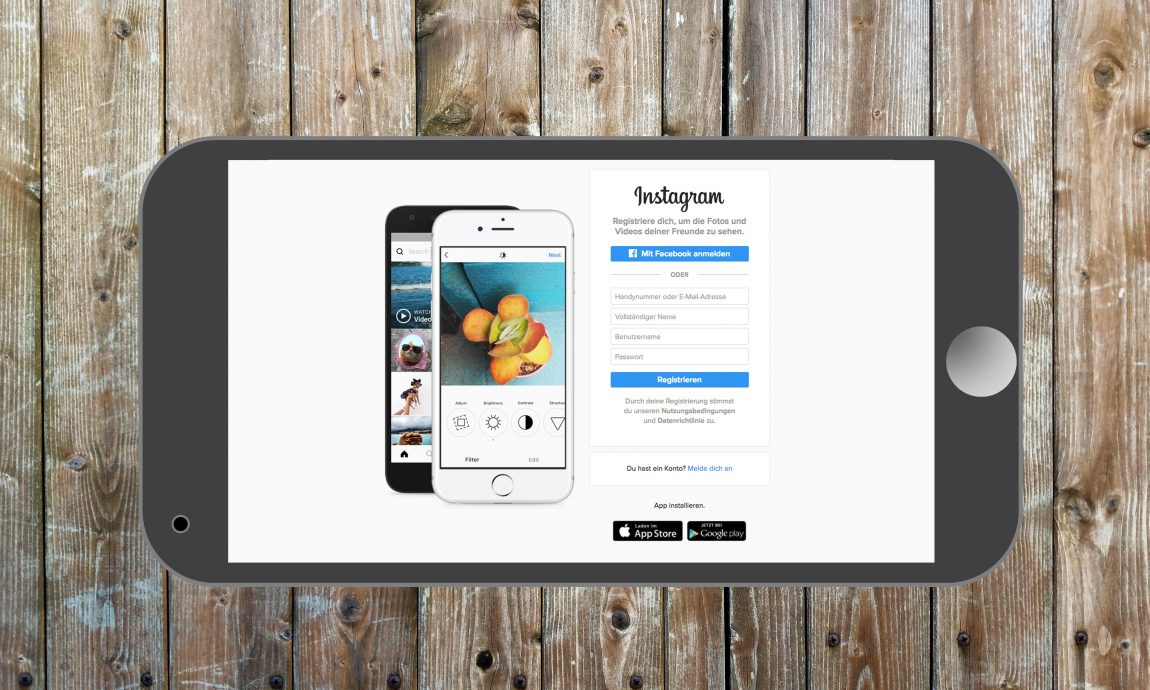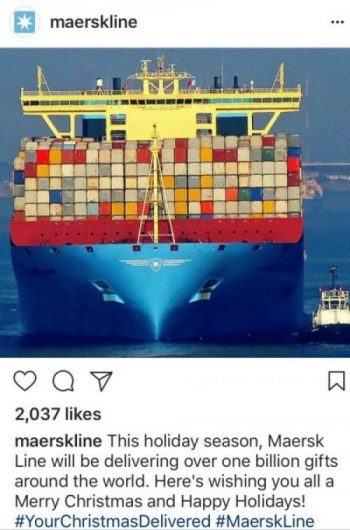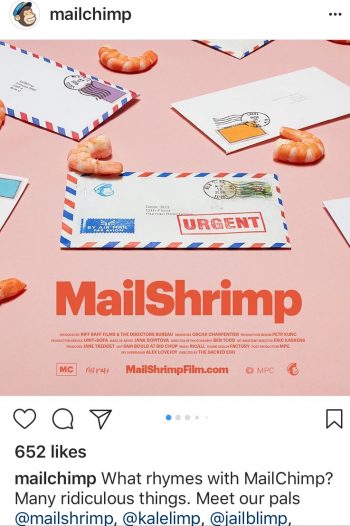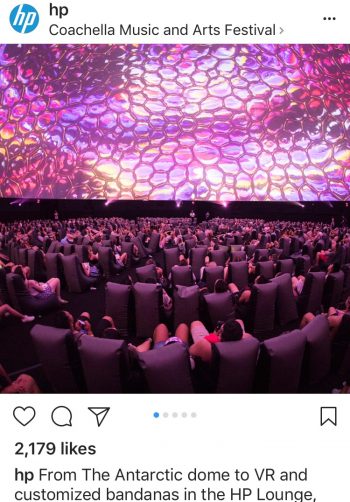The 3 Most Important Factors of Any Social Media Campaign
by MGB2B
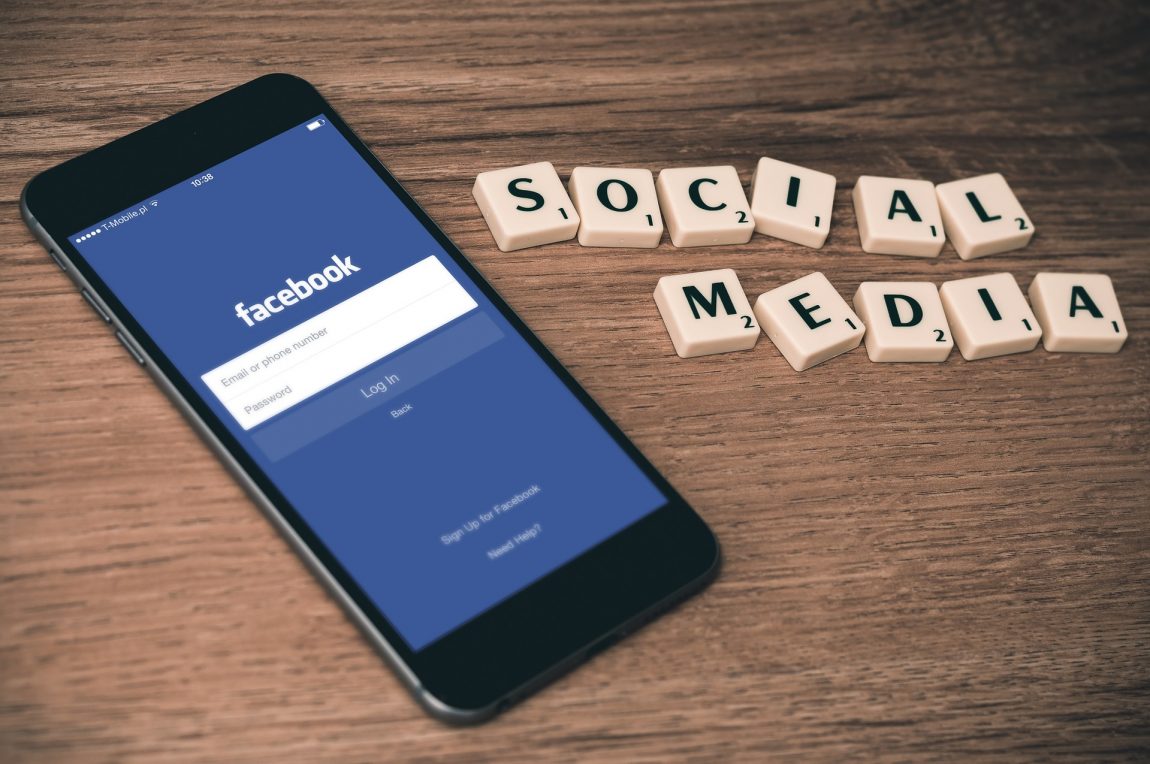 Social media is no longer something only younger generations participate in. Now more than ever, it’s important that your manufacturing company utilizes it to reach a wider audience. In doing so, you’ll get your products and services in front of people who might not have initially seen it. Building a social campaign can be a complicated process, but when done correctly, the payoff is sizable. The most important thing to remember is that campaigns are “living” pieces of your company. They need to be monitored throughout their lifetime to ensure they are running smoothly. And if not? Here are a few things to keep in mind…
Social media is no longer something only younger generations participate in. Now more than ever, it’s important that your manufacturing company utilizes it to reach a wider audience. In doing so, you’ll get your products and services in front of people who might not have initially seen it. Building a social campaign can be a complicated process, but when done correctly, the payoff is sizable. The most important thing to remember is that campaigns are “living” pieces of your company. They need to be monitored throughout their lifetime to ensure they are running smoothly. And if not? Here are a few things to keep in mind…
Organic vs. Paid
You’ve surely heard the terms “organic” and “paid” when it comes to social traffic. Organic traffic is the traffic you get on your social account without having to pay. So, if someone finds your profile, likes a photo, shares a post, or leaves a comment, without any prompting, that’s organic traffic. Paid traffic, on the other hand, happens when you pay to have your posts boosted, ensuring they get in front of your desired audience. The likes, shares, comments, and follows that result directly from these paid campaigns are paid traffic.
So you’ve built your campaign, now what?
To ensure your campaign performs to the best of its ability, there are a few things to focus on:
-
Your Audience
Who you are trying to reach with your message? There are a lot of great metrics tools out there that can help you determine the audience you are already reaching, which you can eventually build off of. Twitter, for example, has an entire section in their user interface that breaks down your audience. From your audience’s interests, to their buying style, wireless carrier, and demographics, you have an incredibly detailed picture. If your campaign not performing as well as you had hoped, analyze this picture. You have time to reconfigure and adjust your audience throughout the lifetime of your campaign, as long as your monitoring it.
-
Your Message
This facet is closely tied to your audience, and varies from each one. Consider speaking to a 28 year old engineer differs versus a 50 year old executive. The interests, abilities, and knowledge of these two people vary greatly. Your message should be tailored to each. Since social media has the ability to speak directly to your audience as individuals (and they’ve come to expect it), make sure you do just that.
-
Your Platform
Social media outlets like Twitter, Facebook, YouTube, Instagram, and LinkedIn all have a purpose, and they’re not necessarily the same. Instagram is strictly for photos or easily-digestible videos. Facebook is a melee of articles, photos, thought-pieces, and more. Hopefully, before you’ve created a campaign, you’ve chosen which platform works best for you, your message, and your audience. It’s easy to default to Facebook but if you notice your campaign taking a hit, take a step back. Review the pros and cons of each social site (and believe me, they all have pros and cons.) If the platform you’ve chosen doesn’t check most or all of your boxes, halt your campaign. Move the budget over to a platform better-suited for your needs. It’ll make a big difference in your ROI.
As with anything, there are more than just three factors that could affect your social media campaign performance – these are just the tip of the iceberg. If you want to get in front of the right people, with the right message, at the right time, you have to do your homework.
Continue ReadingThe LinkedIn Lead Generation Tool You Should Try Right Now
by MGB2B
Two big product announcements have come out of LinkedIn over the past couple of months, one of which your manufacturing company can take advantage of right now. First, the leading social media network for professionals leaked that in November 2017, “Matched Audiences” will enable LinkedIn advertisers to target users based on their web activity and email addresses. And good timing – these options are already available on Twitter, Facebook, and other social sites. Unfortunately, you still have a few months to go before trying this particular feature. But here’s one you can put to use immediately. B2B companies, rejoice: there’s a new function currently available to LinkedIn advertisers: a LinkedIn lead generation tool.
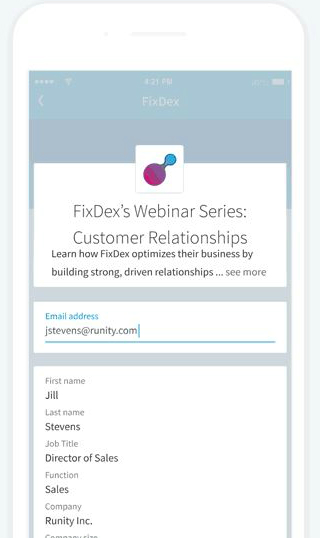 Just In Time
Just In Time
This roll out comes at an opportune time for LinkedIn, who is historically behind the ball when it comes to ad offerings. Twitter, the second most popular B2B social media channel for content distribution, has just sunset its lead generation ad format after several years of stagnancy. And while Facebook continues to offer a similar lead generation ad format, its use by 76% B2B organizations for content distribution pales in comparison to LinkedIn’s 89%. The professional social media network is in a rare position to lead the pack in, well, leads.
For now, the new LinkedIn lead gen ads are available on mobile devices only. And with almost 80% of social media time spent on mobile today, it’s not a bad move. (Though a desktop version will likely roll out eventually.) Thinking about getting started? Here are a few ways to use the new LinkedIn lead generation tool.
3 Ways to Use the New LinkedIn Lead Generation Tool
- White paper downloads. LinkedIn is effectively removing two steps from the traditional 3-step process of 1) advertising your white paper on LinkedIn, 2) directing users to a form fill page on your website, and 3) requiring users to fill out and submit a form to download. Now, users don’t need to leave the confines of LinkedIn to complete steps 2 and 3. And better yet, using their LinkedIn profile information, the form is largely autofilled.
- Webinar registrations. Like the example from this VentureBeat article, these lead gen ads give users a quick, easy way to sign up for online events like webinars. And LinkedIn content ads resemble regular posts – featuring social engagements right on the ad, including the ability to share. This social vote of confidence can work as extra incentive for users to sign up.
- Freebies. What if you could hand select which trade show visitors stopped by your booth for a branded lanyard? With LinkedIn ads, you can target based on demographics, down to which company users work for. And with new lead generation ads, you can offer these targeted users unique experiences and materials that will truly benefit their business, from consultations to a trial run of your product.
Most pieces of content that requires users to register for can be applied to the new LinkedIn lead generation tool. It’s important to remember, though, that until LinkedIn begins offering integrations with CRMs, you still need to download all collected leads from LinkedIn’s campaign manager. From there, they can be entered into your database and mailing list. Most importantly, into registering for whichever piece of content inspired them to click in the first place.
Can you see your company using this new LinkedIn lead generation tool? Need help getting started? Drop us a line.
Continue Reading5 B2B Instagram Marketing Campaigns That Are Nailing It – And How You Can Too
by Emily Swet
Instagram usually isn’t a first priority for B2B marketing and sales teams – and it’s easy to see why. In a platform teeming with rich visual content, it seems a playing field best suited for B2C brands. Set that skepticism aside, because as we like to remind you, there’s still a human behind your leads, and B2B Instagram marketing campaigns can be incredibly compelling.
To get the ball rolling, think about how you view your B2B brand itself. When you start to view your brand (as well as your buyer personas) as a unique group of people with individual stories, backgrounds, and interests, you can craft a visual message that resonates. And that opens the door for a whole lot of visual opportunity and engagement.
Check Out These B2B Instagram Marketing Campaigns for Inspiration:
1. Maersk Line – Shipping Containers. Angle: Aspiration
Who would have thought a shipping container company could get 64k+ followers? Maersk uses striking travel photos and ship imagery to resonate a narrative of world interconnectedness and communication – that they “move more than cargo.”
2. MailChimp – Email Marketing Service. Angle: Artsy, Irreverent, Anything But Boring.
This small business email marketing service could be a snooze fest. But a well-timed podcast advertisement tapped them into where they wanted to be, and an Instagram sensation was born. As one of their comments reads: “Your campaigns are [thumbs up]. I would use Mailchimp just because it’s fun and artsy.” And that says it all.
3. Fedex – Global Shipping. Angle: Affinity
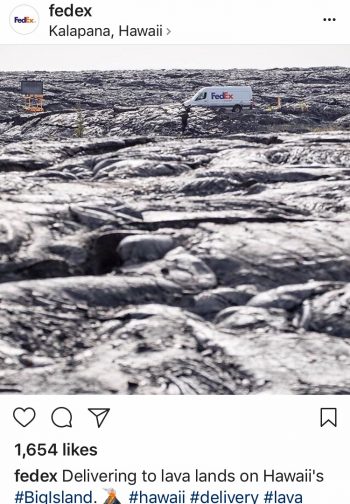
Fedex is already a household name, so the focus here is instead on sustaining brand affinity. Sending cargo never seemed so lofty or fun – and we see how Fedex is always there, rain or shine, in all corners of this beautiful planet.
4. Adobe – Software. Angle: Product Showcase
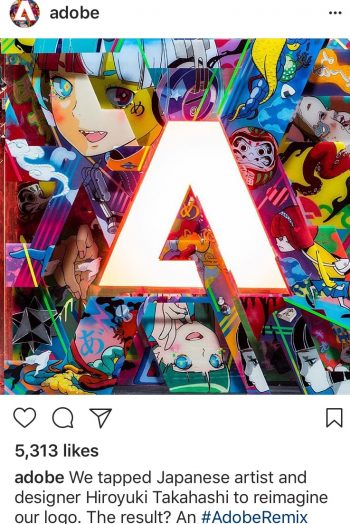
This one is a no-brainer. With a product that lends itself to visual design, Adobe can really stretch its content legs – and it does. They emphasize their product capability with a striking display of visuals that inspire designers of all levels to give their products a go.
5. HP – Technology. Angle: Cutting Edge
HP is another brand that doesn’t need to put much effort into brand recognition. Instead, their approach is a cutting edge image. From virtual reality at Coachella, to gorgeously curated product shots, to technology that’s as fashionable as the models holding them, it’s clear HP lives on the edge of what’s hot now – and what’s next.
The time is ripe for your B2B brand to get on board with Instagram, but we advise you to move fast – early adopters have a much easier go at grabbing attention because the space isn’t crowded… yet. Need help developing an Instagram strategy? Drop us a line – we can help you with that.
Continue Reading